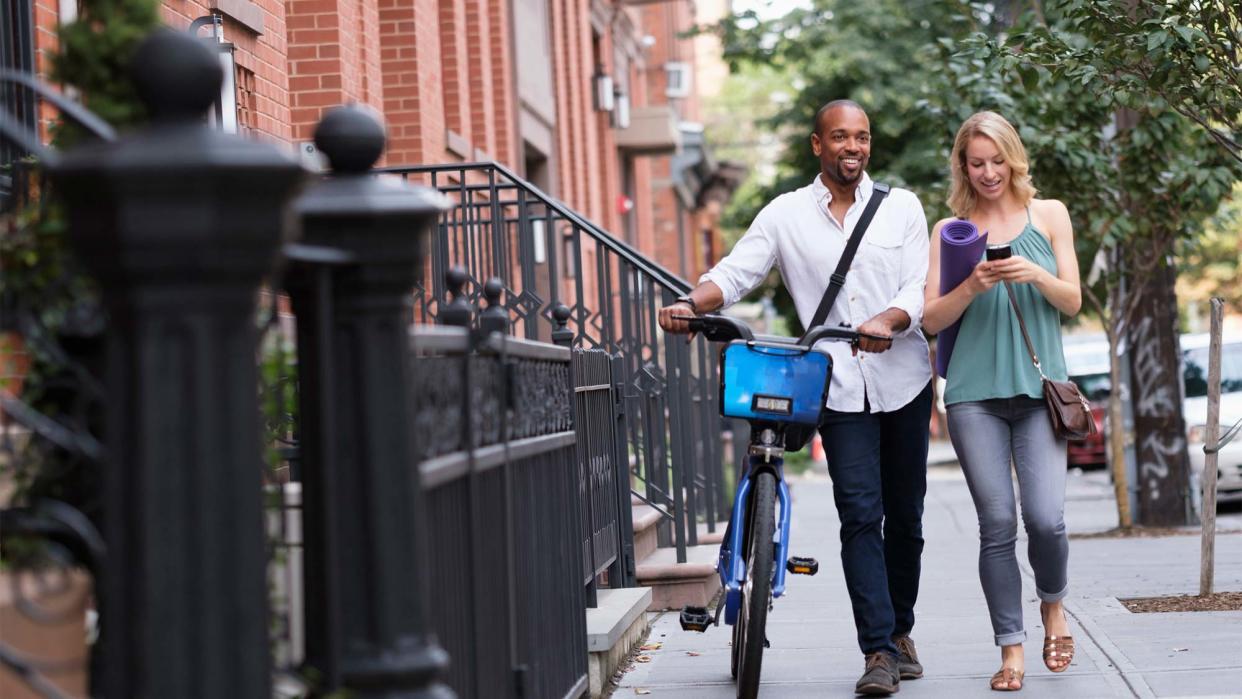The U.S. Cities That Are Gentrifying the Fastest—You’ll Never Guess No. 1
Tetra Images/Getty Images
It’s the hottest of hot-button urban housing issues. In fact the g-word—gentrification—can be looked upon as a virtual catchall for all of the high-decibel talking points about American cities flung about during the endless campaign season of 2016—crime, poverty, upward mobility, urban renewal, and economic opportunity.
But here’s what it really comes down to: poor or working-class families in growing cities being pushed out of their neighborhoods after better-off outsiders move in and substantially drive up the cost of living.
It’s a transformative force that is sweeping through some cities like an economic tsunami. It affects lives and fundamentally alters neighborhoods. On the flip side, long-term residents can benefit, too—particularly homeowners.
Back in the 1980s, Charleston, SC, resident Joseph Watson saw his friends moving out of his depressed Eastside neighborhood because of the lack of opportunity.
“They couldn’t afford to hold onto their properties, and there wasn’t [enough] employment,” says Watson, 67, owner of Mary’s Sweet Shop, which his mother opened in 1968. Local businesses and hotels preferred to hire college graduates, who were few on the ground in Eastside.
But today, it’s a different story. With many neighborhoods in Charleston undergoing gentrification, developers see Eastside as a newly desirable location.
“People come to me daily and ask me if I want to sell my house,” Watson says. Some longtime residents are again moving away, but this time it’s because of the rising prices. And yet for those sticking around, the neighborhood is safer and awash with new retailers, services—and gigs.
“It’s coming back to what it was when I was a little child growing up,” Watson says. “You have people from all over the world living in the neighborhood,” he says. And “there are [new] opportunities for jobs.”
The good news and the bad news
Welcome to the complicated push-pull of modern urban gentrification.
“It’s a trade-off,” says David Fiorenza, an urban economics professor at Villanova University.
“Whole communities can be displaced,” he says. “But people [also] can benefit from it, because home values and business values go up … and eventually, there will be more jobs and better schools.” If they can afford to remain nearby, that is.
We decided to dive into the heart of the matter by deploying the realtor.com® data team to find the fastest gentrifying cities in the country.
So we looked at cities whose population was 50,000 or more between 2000 and 2015. Then we took a look at the U.S. Census Tracts—that’s data-speak for neighborhoods of 1,200 to 8,000 people. We focused on lower-income areas with home values that had the potential for gentrification (excluding wealthier communities that had already arrived.) Then we compared home values as well as residents’ income and education levels in the years from 2000 to 2015, to assess which cities were seeing the biggest turnaround. (Want specifics on our methodology? Check ’em out at the end of the article).

1. Charleston, SC
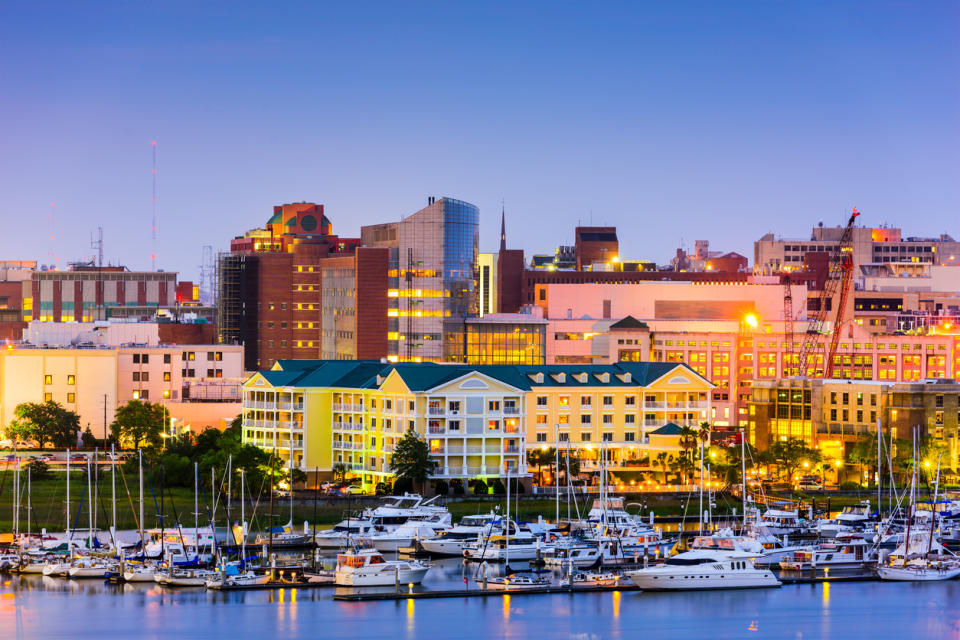
SeanPavonePhoto/iStock
Gentrification potential achieved: 62.5%
Median home price increase, 2000 to 2015: $152,100 to $270,000 (+77.5%)
The issue of gentrification exploded in Charleston in 2001, when Shoreview Apartments, a large, low-income housing project downtown, was razed to the ground to make way for an upscale community of single-family homes. Other neighborhoods that had long been solidly African-American working class also saw a shift toward white, middle-class families. Since 1990, Charleston’s black population has declined from 42% to 23%, according to the Census Bureau.
2. Asheville, NC
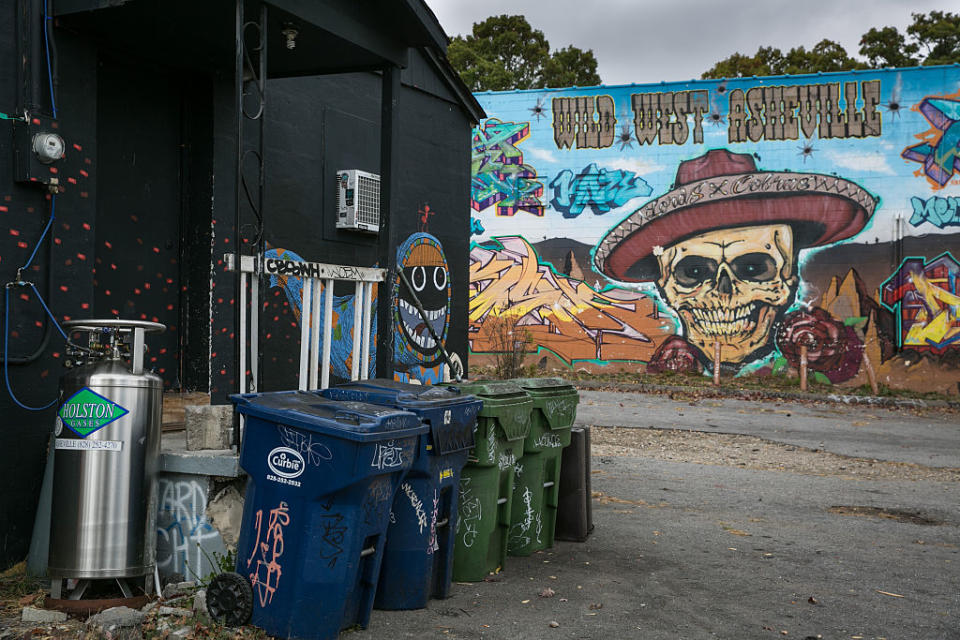
George Rose/Getty Images
Gentrification potential achieved: 50%
Median home price increase, 2000 to 2015: $125,000 to $235,000 (+88%)
Back in 2000, Rolling Stone called Asheville “America’s new freak capital,” attracting an eclectic population of hippies, artists, and musicians. Today, tourists flock to its craft beer breweries, and gated golf communities sell homes for prices as high as $6.5 million—but the quirky, creative characters who once defined the city are vanishing.
Vincent’s Ear, an iconic dive bar where the White Stripes played before they became famous, has been replaced by a high-priced eatery. In the River Arts District, which a city report describes as being “in the middle phase of gentrification,” two dozen artists were displaced in 2014, when their buildings were ordered to close because of fire hazards. The site is currently being renovated, and the hope is that some units will be affordable for artists, according to photographer Jeremy Russell, one of those who were kicked out.
But the newly upscale neighborhood isn’t for everyone. “Some artists definitely moved away [from Asheville] … those who are more progressive, and pushing the boundaries,” Russell says.
3. Washington, DC
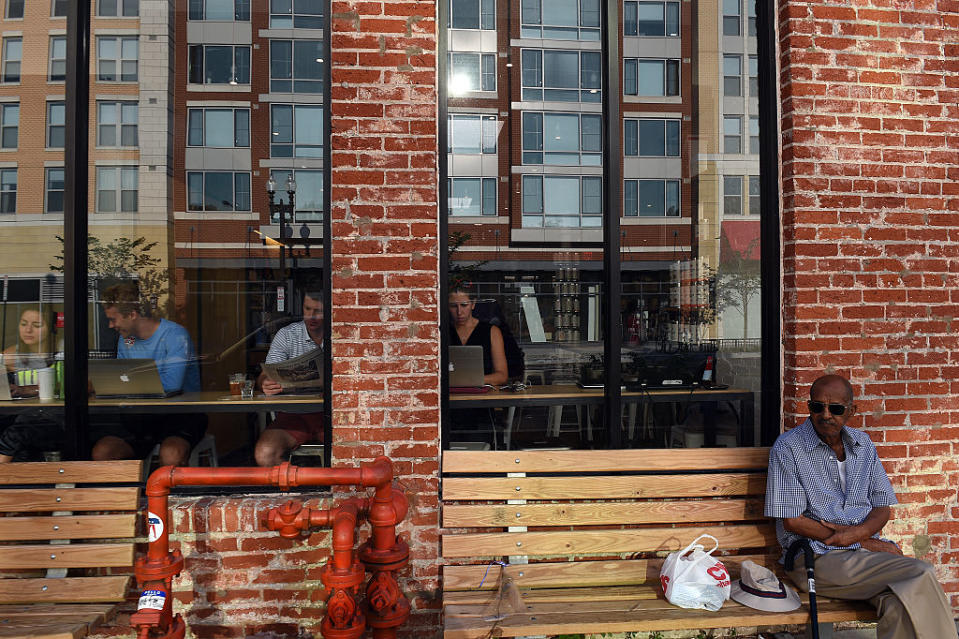
Astrid Riecken For The Washington Post via Getty Images
Gentrification potential achieved: 39.4%
Median home price increase, 2000 to 2015: $159,900 to $525,000 (+228.3%)
At the beginning of this century, DC Mayor Anthony Williams had ambitious plans to revitalize the city’s depressed neighborhoods. Today, the Navy Yard (home of the Nationals’ new ballpark), NoMa, and Columbia Heights have shed their dingy image and become the new “it” neighborhoods.
“There are a lot more things to do—restaurants, bars, shopping like Best Buy and Target. It’s very convenient,” says Andrew Wiseman, a resident of Columbia Heights since 2007 who runs the blog New Columbia Heights. However, he adds, “the reactions to the changes are really mixed. Families that have been here for generations don’t like it. Local retailers are being pushed out, corner stores are closing.”
4. Portland, OR

George Rose/Getty Images
Gentrification potential achieved: 33.9%
Median home price increase, 2000 to 2015: $148,000 to $340,000 (+129.7%)
Hmmm … could the trendsetting Portland really have achieved only 33.9% of its gentrification potential? Well, yes, since our analysis starts with 2000, and the poster child for the modern hipster movement was ahead of the curve.
“Gentrification in Portland is not a new phenomenon,” says Katrina Holland, executive director of Community Alliance of Tenants in Portland. “Since the 1960s and ’70s, there has been serial displacement of the African-American community. Now it’s the first time that white, middle-class families are also being priced out.”
Perhaps that’s why lots of “urban pioneers” are ditching Portland for places like Detroit, in search of a cheaper cultural scene.
5. Denver, CO
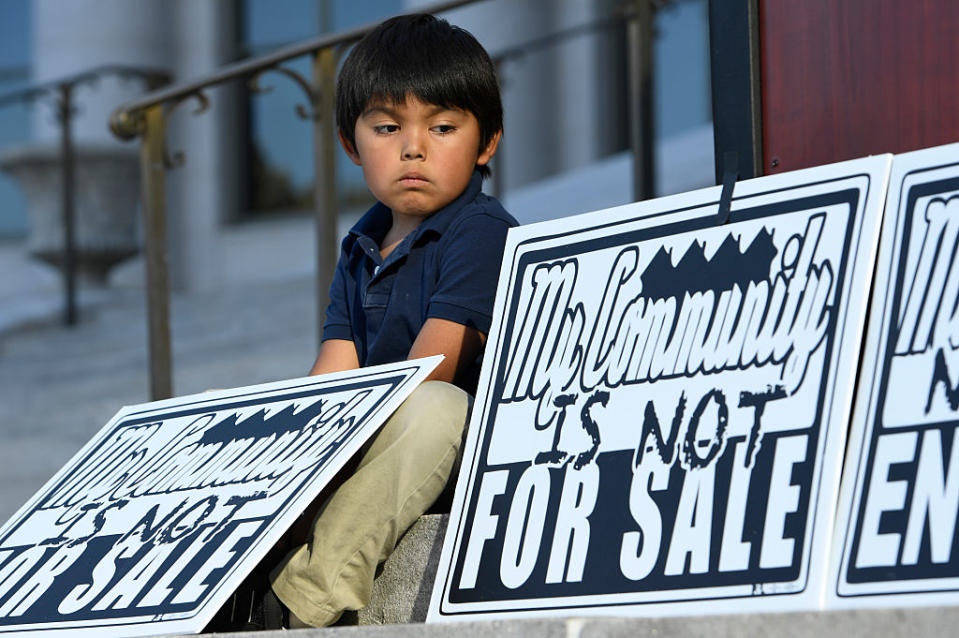
Helen H. Richardson/The Denver Post via Getty Images
Gentrification potential achieved: 32.8%
Median home price increase, 2000 to 2015: $162,000 to $316,000 (+95.1%)
We’ve noted it before: The Denver market is hot. Scalding, in fact. The booming tech industry, outdoor lifestyle, and more recently, Colorado’s legalization of marijuana have drawn transplants and starry-eyed developers to the city.
The North Denver neighborhoods of Globeville and Elyria-Swansea are going through significant changes. Depending which day you visit the area, it either smells of legal weed—due to a high concentration of marijuana businesses—or dog food from the nearby Purina factory. But three multibillion-dollar developments have lifted property values by 60% from 2013 to 2015, and residents saw their property taxes increase by as much as $600, according to Stephen Moore, policy director for FRESC, a nonprofit organization working with low-income communities.
“Many of our historical black and Hispanic communities are being destroyed explicitly by gentrification,” Moore says. “We are not against investment in those communities, we want that. But we’d like to see more policies that protect the people that live there now, and help them stay.”
6. Nashville, TN
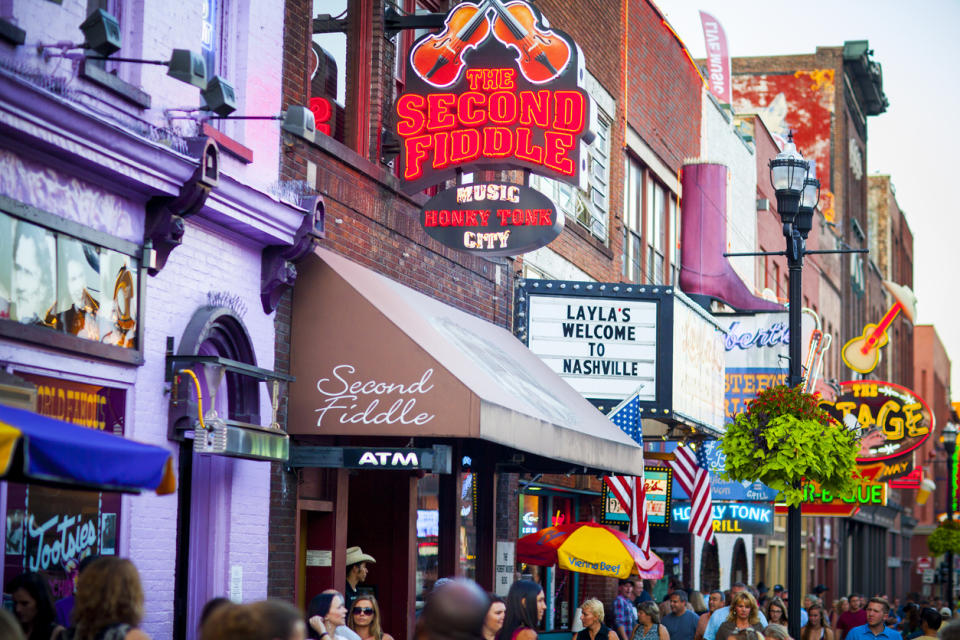
FangXiaNuo/iStock
Gentrification potential achieved: 27.6%
Median home price increase, 2000 to 2015: $118,400 to $205,000 (+73.1%)
Every day, the Nashville metro gains 71 to 100 people. The city’s entertainment and health care industries bring in a steady flow of wealthy transplants. East Nashville, where the city’s musicians and artists have long resided, was on the frontline of gentrification.
“The most significant change in the last 10 years was the influx of builders, because the houses here were old and cheap,” says Realtor® Cindy Evans of RE/MAX Choice Properties, who moved to East Nashville in 1980. “After the commercial areas were built, young professionals moved in—for the amenities more than the housing.”
But since the urban core is still relatively inexpensive, Nashville is experiencing intense speculation by developers and investors.
7. Sacramento, CA
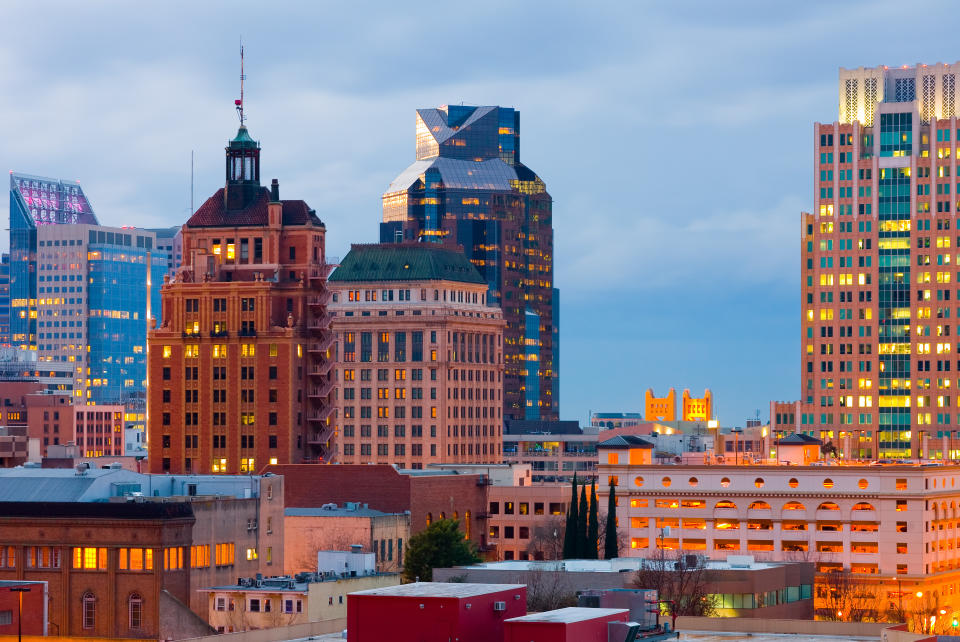
photoquest7/iStock
Gentrification potential achieved: 26.5%
Median home price increase, 2000 to 2015: $127,500 to $255,000 (+100%)
Thanks to decades of urban redevelopment and to its affordable real estate, Sacramento—just a couple of hours east of San Francisco—is seeing an influx of young professionals and well-off empty-nesters. Midtown, a former hard-knock neighborhood, has been taken over by stylish white-linen restaurants and pricey new condos.
The latest wave of gentrification has also hit Oak Park, a historically black neighborhood where Patti Miller, owner of Patris Studio Gallery, moved 20 years ago.
“It was a ghetto, and rent was really cheap,” Miller says, adding that artists, because they often can’t afford much, “are usually dealing with the grittier side of a city.”
In the past decade, the rents got higher and Miller’s artist friends began to leave—for Oregon, Arizona, and even South America. Miller nearly lost her gallery to developers in September. And what’s in Oak Park today? Trendy locales like “holistic spa” Capitol Floats, where customers spend $65 for an hour of relaxing in lukewarm saltwater.
8. Jersey City, NJ
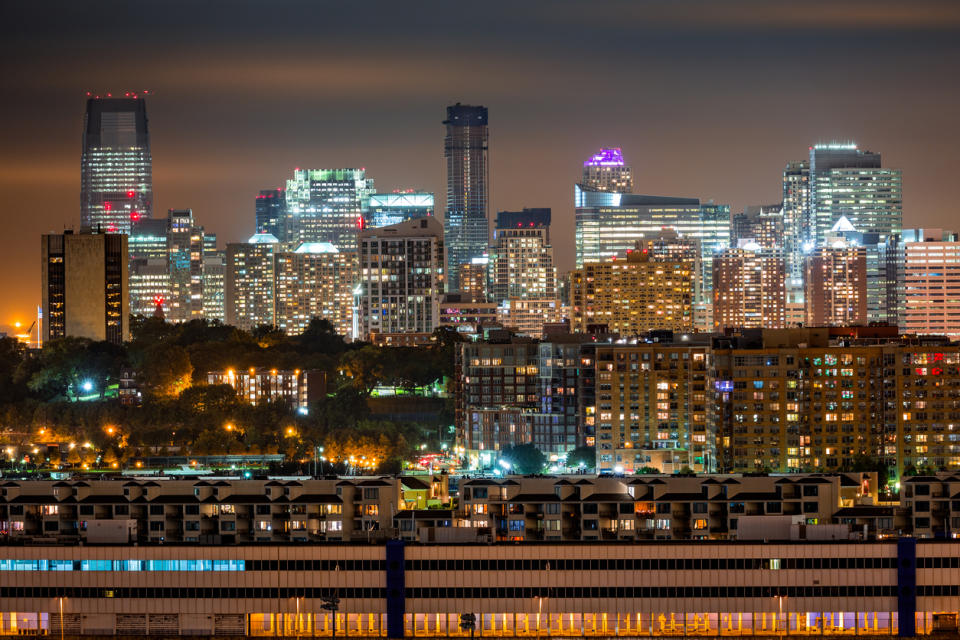
Ultima_Gaina/iStock
Gentrification potential achieved: 24.5%
Median home price increase, 2000 to 2015: $142,000 to $380,000 (+167.6%)
It wasn’t long ago that downtown Jersey City was more of a punch line than a destination stop, typified by vacant lots and abandoned tenements. Now, its falling crime rate has made it safer for families, and new condos are going up at a rapid clip.
With Manhattan just over the river, Jersey City offers a relatively easy commute and more affordable homes than the fast-track meccas of gentrification nearby, like the more desirable parts of Brooklyn.
The housing market is also driven by wealthy foreign buyers, says Saquib Rahim, a sales associate from Coldwell Banker. “In the rental market, New Jersey has rent control, so renters are protected from huge rent increases. But local businesses are being priced out, for sure.”
9. Long Beach, CA
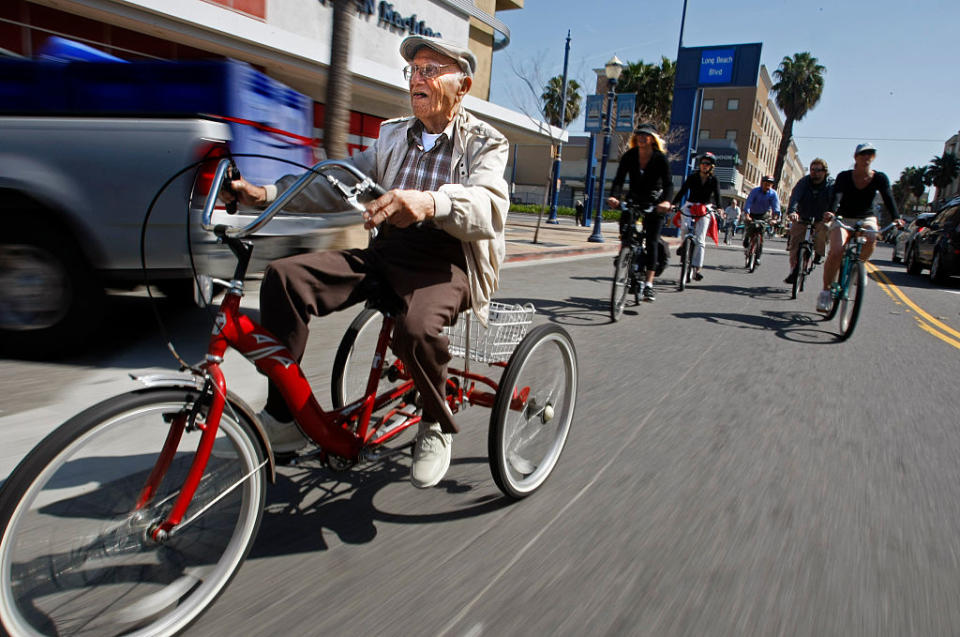
Don Bartletti / Los Angeles Times via Getty Images
Gentrification potential achieved: 22.4%
Median home price increase from 2000 to 2015: $179,000 to $455,000 (up 154.2%)
In downtown Long Beach, developers are turning all kinds of buildings—even a former department store—into high-end condos. The previous industrial hub with rundown buildings is now a residential community, with amenities like boutiques, craft breweries, and restaurants.
The average rent downtown is now $2,645, according to Rent Jungle. Who’s paying those prices? A 2016 report by the Downtown Long Beach Alliance showed that the largest number of downtown residents were “metro renters”—young, educated singles who love the arts and spend money on the newest technology.
“Millennials are moving in for walkability and bikeability—there are custom bike lanes and bike-share stations,” says Realtor Jason Patterson from RE/MAX College Park Realty, who represents a waterfront condo building selling for $729,500 a unit.
10. Austin, TX
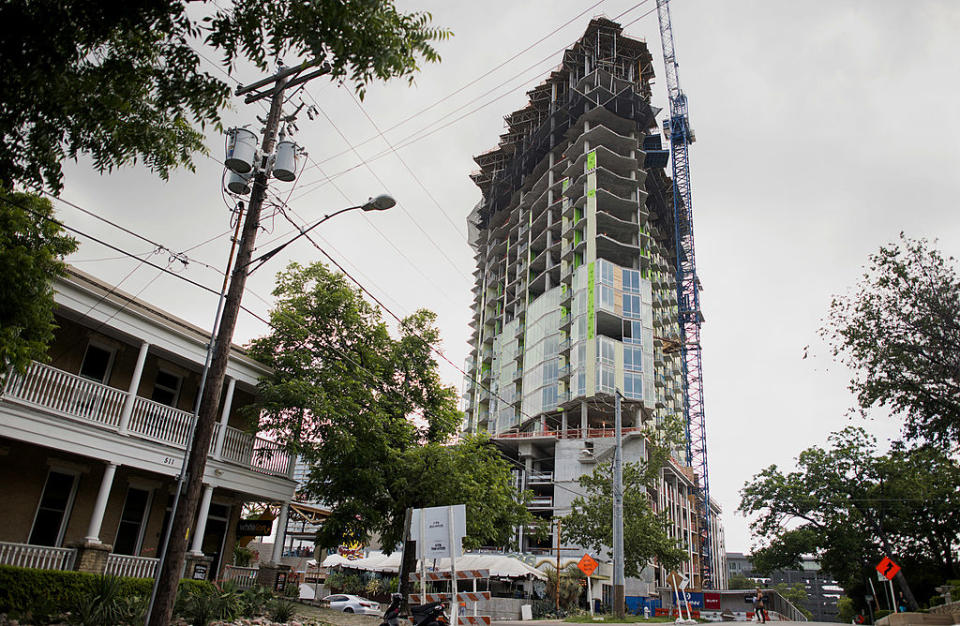
Ty Wright/Bloomberg via Getty Images
Gentrification potential achieved: 22.2%
Median home price increase from 2000 to 2015: $152,600 to $299,300 (96.1%)
Many residents tout the unofficial motto, “Keep Austin Weird,” but they may be fighting a losing battle. Condos and upper-income apartments are popping up everywhere, driving up rents and home prices as developers cash in on the city’s trendiness.
For years, East Austin residents have decried gentrification. In 2006, a local nonprofit had about 250 people on a waiting list for affordable housing, but that number had risen to 700 by 2015. The previously forgotten neighborhood with a largely African-American and Latino population began to get attention in the early 2000s. As Austin’s population grew, people from outside the community were drawn to the low rents of the area close to downtown. The result was a wave of new developments, and now East Austin is rebuilding a fancier, more congested version of itself.
* Our methodology considered a Census Tract eligible for gentrification if it had a population of more than 500 people, and both median household income and median home value fell within the bottom 40th percentile of all tracts within its metro in 2000.
Of those eligible tracts, a tract was further considered gentrified if it had experienced a significant increase in median income, median home value, and educational attainment between 2000 and 2015.
The ranking is based on the share of gentrified tracts out of a city’s total eligible tracts. The final list included only cities that had more than five gentrified tracts.
Data were collected from the realtor.com sales database, American Community Survey, and the US2010 project of Brown University’s Russell Sage Foundation. We consulted research methodology from a 2005 Columbia University study and a 2015 Governing magazine report.
The post The U.S. Cities That Are Gentrifying the Fastest—You’ll Never Guess No. 1 appeared first on Real Estate News & Advice | realtor.com®.


